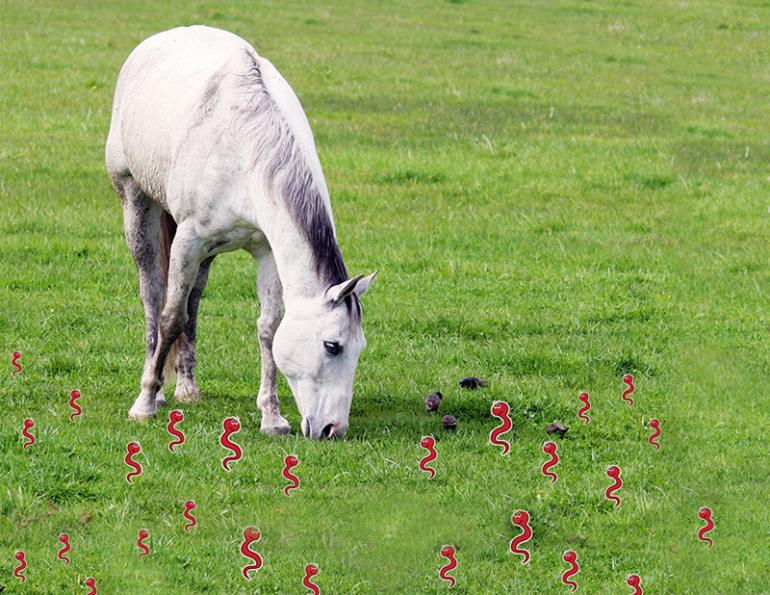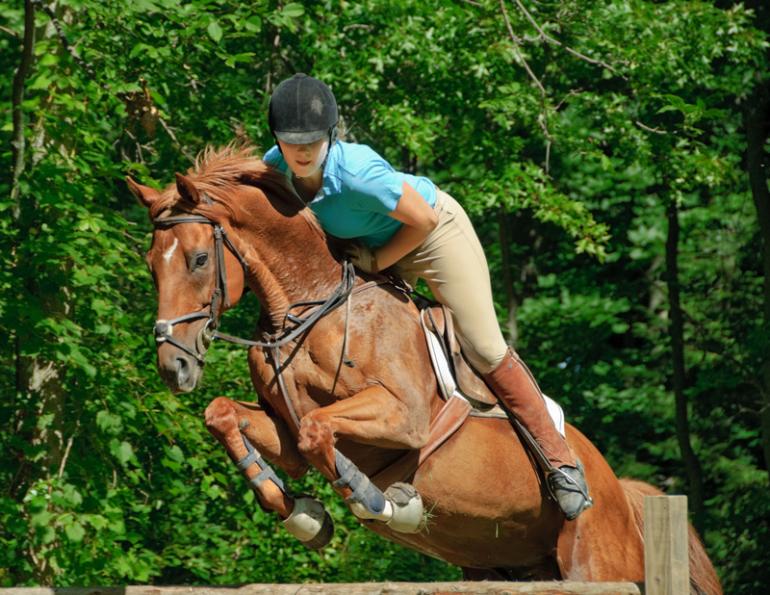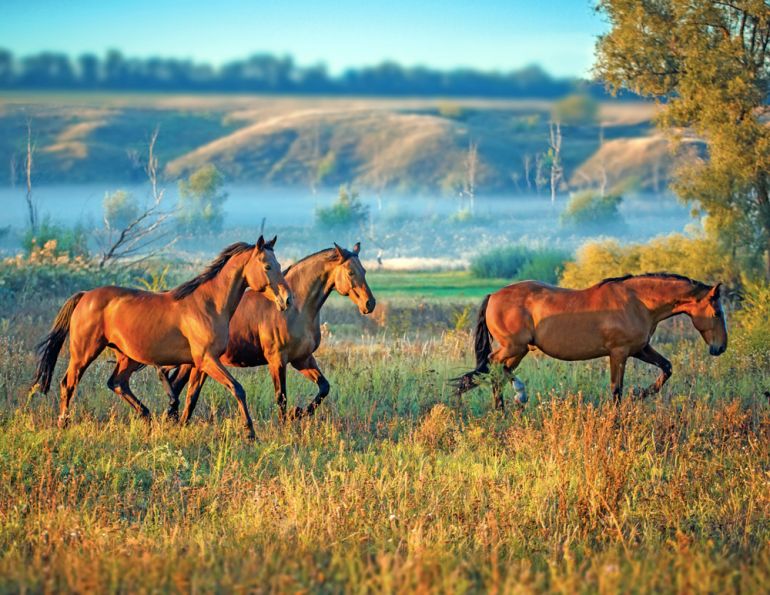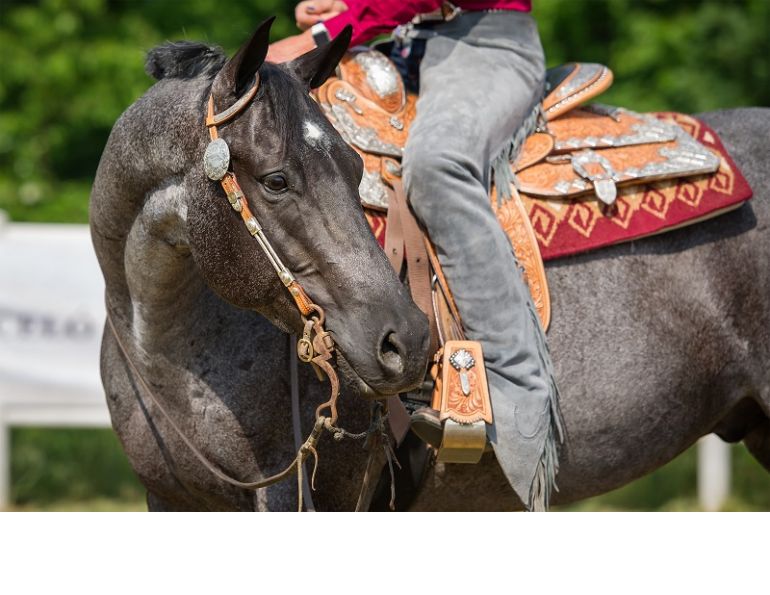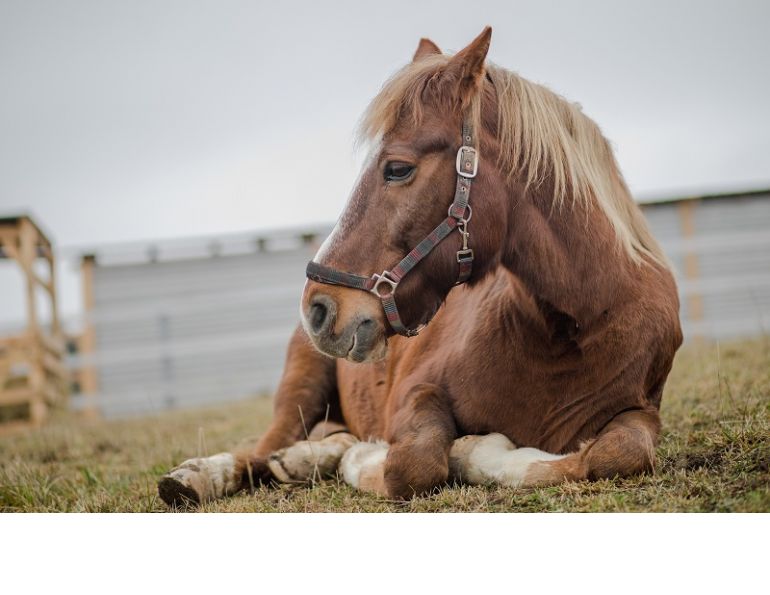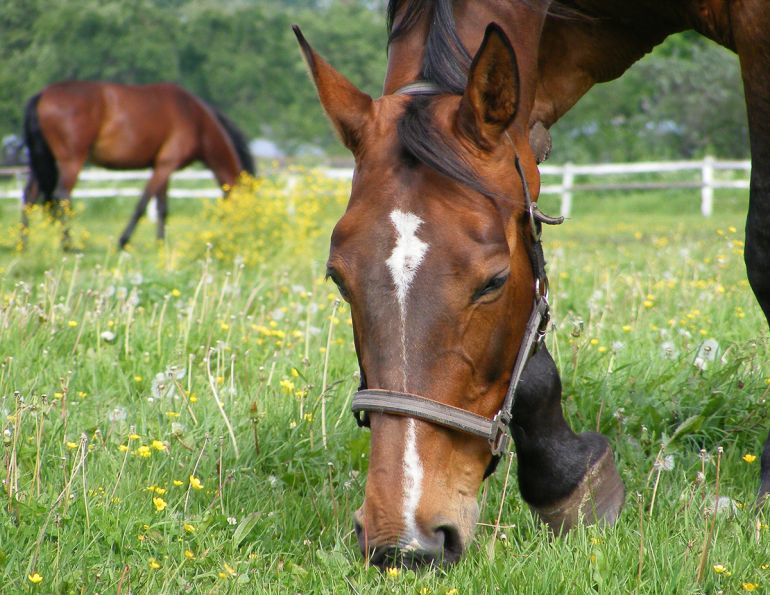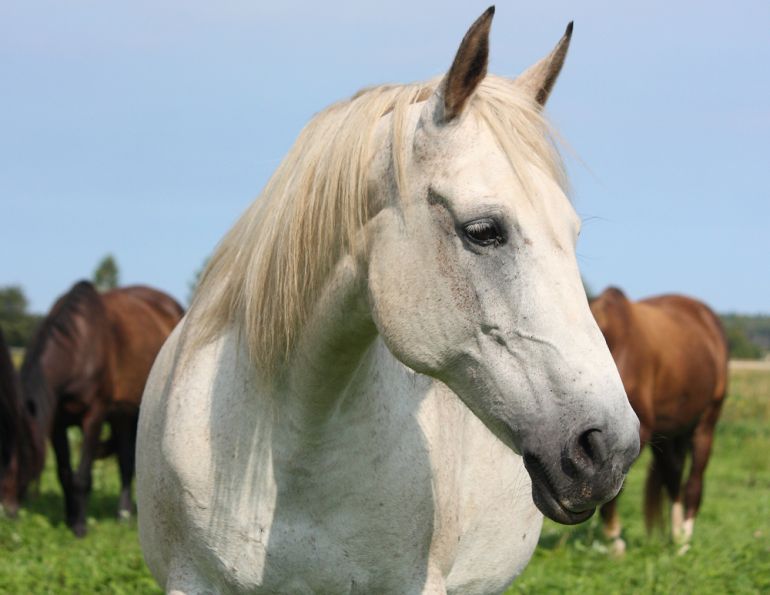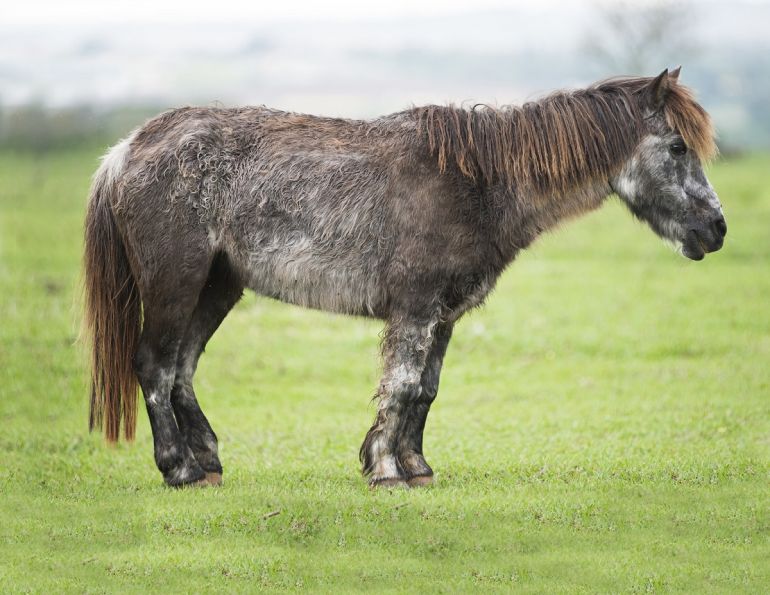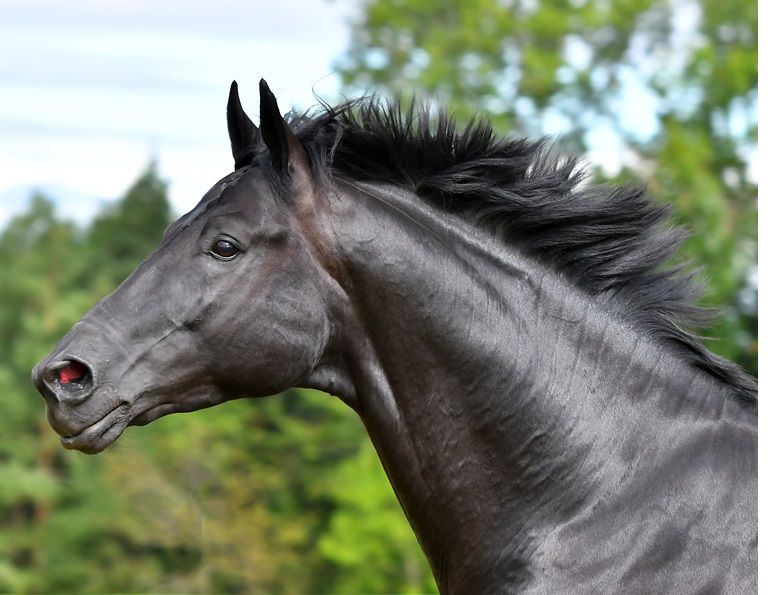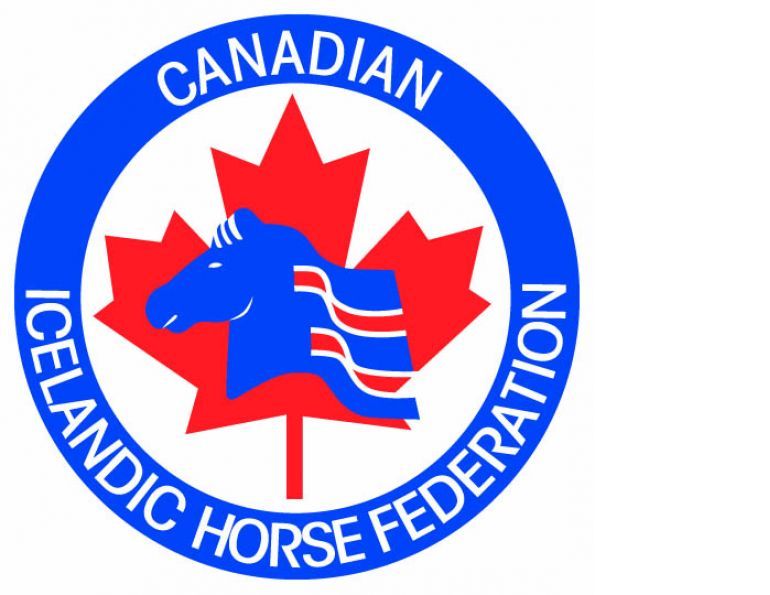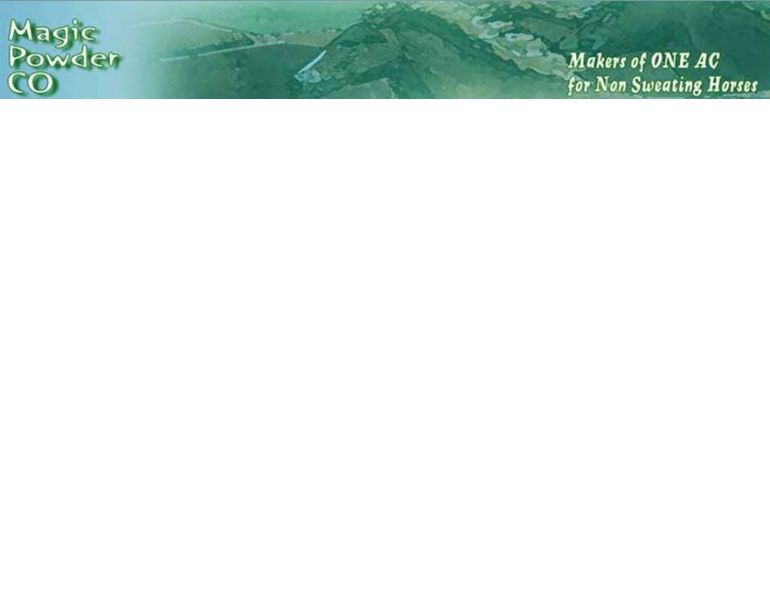Managing Resistant Parasites in Horses
By Donna Foulk, Extension Educator
Parasite control is an important component of all equine health care programs. It is no longer enough to simply pull out a tube of dewormer and treat your horses every eight weeks.
Resistant Parasites
Today it is critically important to understand the basics of parasite resistance and develop a deworming program that will work for your farm. That program will need to be reevaluated and modified as environmental conditions change from year to year, and farm management and the number of horses fluctuates. It is imperative that all horse owners begin to combat resistant parasites that can spread from farm to farm, causing alarming consequences for the equine community. Resistance is a real threat. With no new products on the horizon, it is important to protect our horses by keeping current products effective.
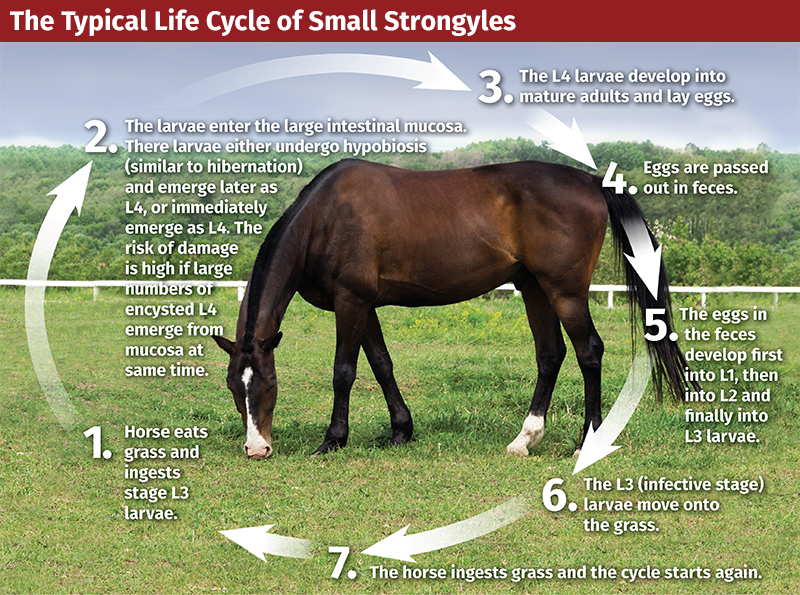
What is resistance?
Resistance is defined as the ability of parasitic worms in a population to survive a treatment that was once effective against the worms.
Today most horse owners continue to follow recommendations that are 30 to 40 years old, and may be using products that are totally ineffective. The groundwork for resistance was already in place in the late 1960s when new deworming products were introduced along with the recommendations that horse owners use them every eight weeks. Prior to the introduction of these products, the large strongyle (Strongylus vulgaris) was the parasite of greatest concern. These large parasites migrated through arteries, interrupting blood supply to the gut, causing colic and sometimes death. However, the use of the drugs of the 1960s and newer products of the 1970s and 1980s greatly reduced the prevalence of large strongyles on farms. Unfortunately, indiscriminate use of these products has led to a drastic increase of another parasite, the small strongyle (cyathostomes). By the 1980s it was recognized that virtually 100 percent of the eggs being shed by horses were small strongyle eggs.
Related: Pasture Perils - Plants Toxic to Horses
Small strongyle
Small strongyle larvae are very small, virtually microscopic in size. Over 100,000 small strongyle worms can live in a horse resulting in the production of millions of eggs. Hundreds of larvae can live in a droplet of water on a blade of grass.

Small strongyle larvae are the white, thread-like objects in the water droplets. They have climbed the stems of the grass and are waiting to be eaten by a horse. Photo courtesy of University of Kentucky
Populations of these parasites on farms can be very large. Because of their rapid reproductive rate and ability to produce massive numbers of eggs, it is very easy for resistant worms to develop quite quickly. And the more frequently deworming products are used, the quicker the resistant parasite levels will build. Normally there are very few resistant worms on a farm. Each time deworming products are used, the worms that are susceptible to the product are killed. Only the resistant worms survive and pass on their genes for resistance. Horses graze and pick up resistant larvae and then shed more resistant worm eggs. Over time, the whole small strongyle population on the farm is resistant.
The old way of deworming horses is not working – so what should you do?
Work with your veterinarian to develop a program that works for your farm, at the same time reducing reliance on deworming products that can lead to resistant parasites. To develop an effective program it is necessary to understand the parasites that you want to control, in other words, it is necessary to think like a parasite…
1. If you are a parasite... Your number one goal is to produce thousands of eggs. Relatively speaking, very few parasites are actually in the horse. The vast majority of worms are on the pastures. The goal of a deworming program should not be to just kill parasites in the horse. The major goal should be to reduce shedding of eggs on pastures where they can contaminate many horses. It is especially important to prevent shedding of eggs on pastures in early spring to reduce the potential for season-long increases in parasite concentrations.
2. If you are a parasite... You will be found in greatest numbers in horses that have poor immunity to you. Most horses have some level of immunity to small strongyles and shed very few eggs. It is estimated that 20 to 30 percent of the horses on farms produce 80 percent of the eggs. It is important to conduct fecal egg counts to determine which horses carry large parasite burdens and develop a management plan that prevents them from shedding eggs on pastures.
3. If you are a parasite... You will have developed strategies to survive adverse conditions in the environment. Warm, wet conditions are necessary for the development of larvae that can infect horses. Hot, dry conditions were previously thought to be the enemy of parasites. However, research conducted by Dr. Michael Sukhdeo of Rutgers University has shown that small strongyles can actually survive very hot dry conditions by “dehydrating.” In this state the worms are brittle, use very little energy, and can survive long periods in the pasture. They cannot infect a horse in the dehydrated stage but will rehydrate when rain returns. When a drought is broken, large numbers of infectious stage parasites may become viable in pastures. Dragging pastures in summer will just serve to spread these dehydrated parasites. Parasites can survive in the infectious stage at temperatures of seven to thirty degrees Celsius. Eggs can hatch and develop into infectious stage larvae in three to five days at temperatures in the mid-20 degree C range and higher when moisture is adequate. At cooler temperatures, this may take weeks or months.
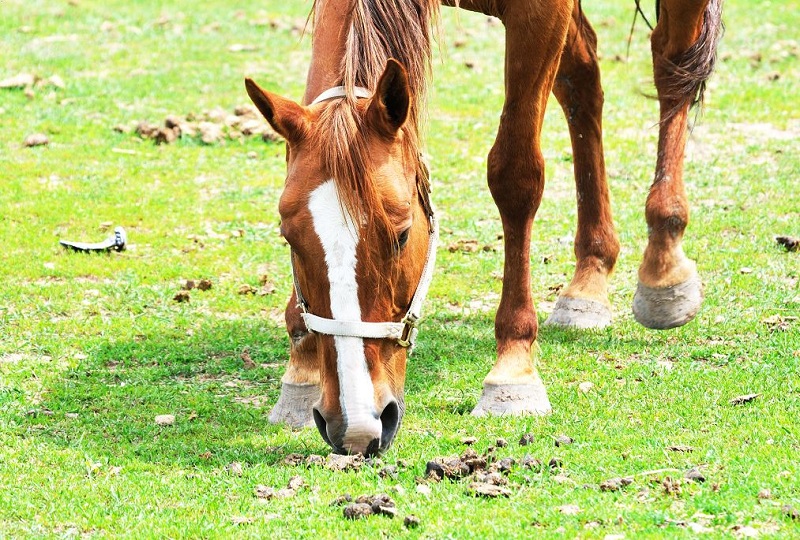
Research has shown that small strongyles can survive long period of hot, dry conditions by dehydrating. When dry and brittle they can survive in the pasture but cannot infect a horse until they rehydrate when the drought is over. Dragging pastures in summer will spread the dehydrated parasites around the pasture. Photo: Thinkstock/Steverts
4. If you are a parasite... You want the manure to be deposited in a pasture containing grasses (and a lot of horses.) Stalls and stress lots are generally too dry to support the development of small strongyle larvae that can infect horses. In addition, ammonia from urine in bedding is fatal to small strongyles.
5. If you are a parasite... There are certain areas of a pasture where you will most likely be found. Horses tend to produce manure as a group in areas of a pasture called “roughs.” Horses do not graze the roughs in the pastures. They will graze pasture grasses around the roughs creating “lawns” in the pasture. Small strongyle eggs are deposited in the manure in the pasture roughs and will develop into larvae under the right conditions. The larvae are extremely small and do not have the energy to move very far from the roughs. However, rain can move parasites downhill from the roughs where they were deposited. The parasites will usually be found in the highest concentration below the manure deposition sites, in the lower parts of the pastures. The downhill area where the parasites are found usually has the highest soil fertility, the most soil moisture, and the best grass. Interestingly, this is also where the horses most often graze. If you are a parasite you would like that!
Related: Horse Care Through the Seasons

Removing manure from pastures is essential to reduce the risk of parasite infection. Photo: Thinkstock/MikeInLondon
6. If you are a parasite... You need to be eaten fairly quickly once you are in the infectious stage. You will be found in a droplet of water on a blade of grass and you will be very still to conserve energy. If no horse eats you when you are in the infectious stage, you will die. Rotating pastures can help reduce parasite burdens on pastures. If you are eaten by another type of animal you will also die. Multi-species grazing can help with parasite control.

Horses tend to leave “roughs” of taller grass where manure is deposited, and graze pasture areas around the roughs creating “lawns.” Small strongyle eggs are deposited in the manure in the roughs and develop into larvae, and are moved downhill by rain from the roughs into areas where horses graze. Photo: Thinkstock/Steverts
7. If you are a parasite... Your population will be strengthened if the horse owner uses dewormers frequently. Your family members with resistant genes will survive while all your relatives without these genes will die. Pretty soon only larvae from eggs from resistant relatives will be infecting horses. Proper protocol today calls for maintaining a population of parasites that can be killed by dewormers (a refuge) in order to delay the development of resistant parasites. Fecal egg counts conducted before and after using a deworming product can be used to determine if the parasites on your farm are resistant to that product.
8. If you are a parasite... you would appreciate help in being spread throughout the pasture. Harrowing the pasture and spreading fresh manure will increase the areas of the pasture that have infectious larvae. Harrowing pastures in summer will just serve to spread dehydrated larvae. Removing manure from pastures will effectively reduce the chance of parasite infection. Always be sure to properly compost manure before spreading it on pastures. The heat of composting will destroy many small strongyle eggs.

In the infectious stage parasites need to be eaten by a horse fairly quickly. If not consumed by a horse or if eaten by another type of animal, the parasite will die.
Goal of a Parasite Control Program Today
Parasites have evolved over millions of years to be very good at what they do. The goal of a parasite control program today is not to eliminate parasites, but to reduce transmission, maintain worm burdens below harmful levels, and manage those horses that maintain chronically high parasite levels. To do this it is critical to involve your veterinarian in management decisions, use fecal egg counts to determine what the parasite levels are in your horses, and make decisions based on environmental conditions, pasture management practices, and parasite levels on your farm. Thinking like a parasite will help you deal with them!
Related: Flies Affecting Horses: Buzzing and Biting
Related: Intestinal Parasites in Horses
Donna Foulk is an Equine Natural Resources Educator with Penn State Extension.
Reprinted with the kind permission of PennState Extension.
Main article photo: Canstock/Terdonal



